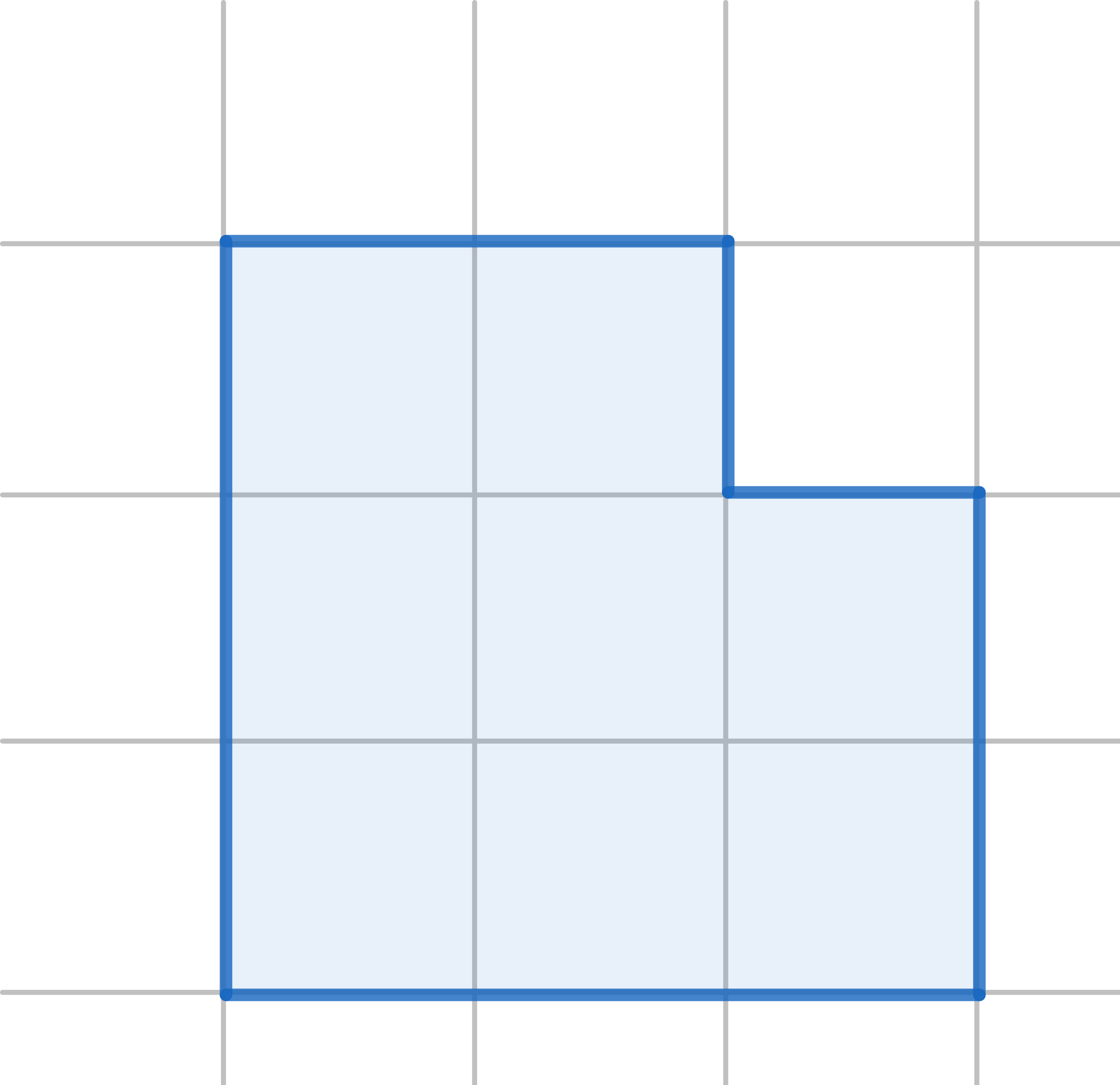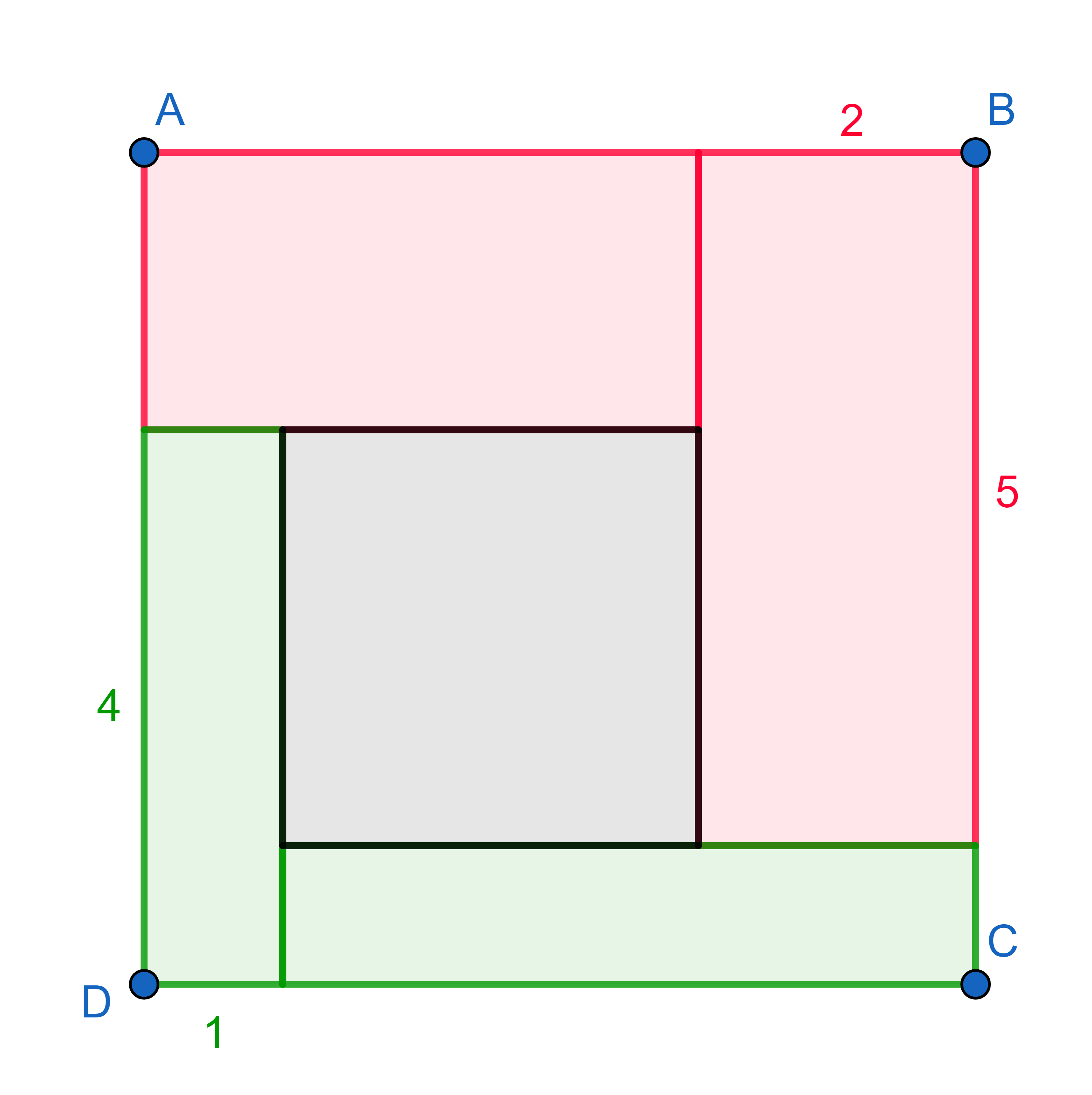Problems
The diagram shows a \(3 \times 3\) square with one corner removed. Cut it into three pieces, not necessarily identical, which can be reassembled to make a square:

Find all possible non-zero digits \(A\) for which the following holds \((AA+AA+1) \times A = AAA\). (Recall \(AA\) means the two-digit number whose first and second digits are \(A\))
A square has been divided into \(4\) rectangles and a square. If the rectangle in the bottom left corner has dimensions \(1 \times 4\) and the one in the top right is \(2 \times 5\), what is the area of the small square in the middle?

There are \(25\) bugs sitting on the squares of a \(5 \times 5\) board, \(1\) at each square. When I clap my hands, each bug jumps to a square diagonally from where it was before. Show that after I clap my hands, at least \(5\) squares will be empty.
In a convex quadrilateral \(ABCD\), all the triangles \(\triangle ABC\), \(\triangle BCD\), \(\triangle CDA\) and \(\triangle DAB\) have equal perimeters. Show that \(ABCD\) is a rectangle.
Find the last two digits of the number \[33333333333333333347^4 - 11111111111111111147^4\]
Replace all stars with ”+” or ”\(\times\)” signs so the equation holds: \[1*2*3*4*5*6=100\] Extra brackets may be added if necessary. Please write down the expression into the answer box.
In how many ways can one change \(\pounds 2\) into coins worth \(50\)p, \(20\)p and \(10\)p? One does not necessarily need to use all available coin types, i.e. having \(5\) coins of \(20\)p and \(10\) coins of \(10\)p is allowed.
In a lot of geometric problems the main idea is to find congruent figures. We call two polygons congruent if all their corresponding sides and angles are equal. Triangles are the easiest sort of polygons to deal with. Assume we are given two triangles \(ABC\) and \(A_1B_1C_1\) and we need to check whether they are congruent or not, some rules that help are:
If all three corresponding sides of the triangles are equal, then the triangles are congruent.
If, in the given triangles \(ABC\) and \(A_1B_1C_1\), two corresponding sides \(AB=A_1B_1\), \(AC=A_1C_1\) and the angles between them \(\angle BAC = \angle B_1A_1C_1\) are equal, then the triangles are congruent.
If the sides \(AB=A_1B_1\) and pairs of the corresponding angles next to them \(\angle CAB = \angle C_1A_1B_1\) and \(\angle CBA = \angle C_1B_1A_1\) are equal, then the triangles are congruent.
At a previous geometry lesson we have derived these rules from the axioms of Euclidean geometry, so now we can just use them.
Consider two congruent triangles \(ABC\) and \(A_1B_1C_1\). We draw a point \(M\) on the side \(BC\) and a point \(M_1\) on the side \(B_1C_1\) such that the ratio of lengths
\(BM:MC\) is equal to the ratio of
lengths \(B_1M_1:M_1C_1\). Prove that
\(AM = A_1M_1\).
